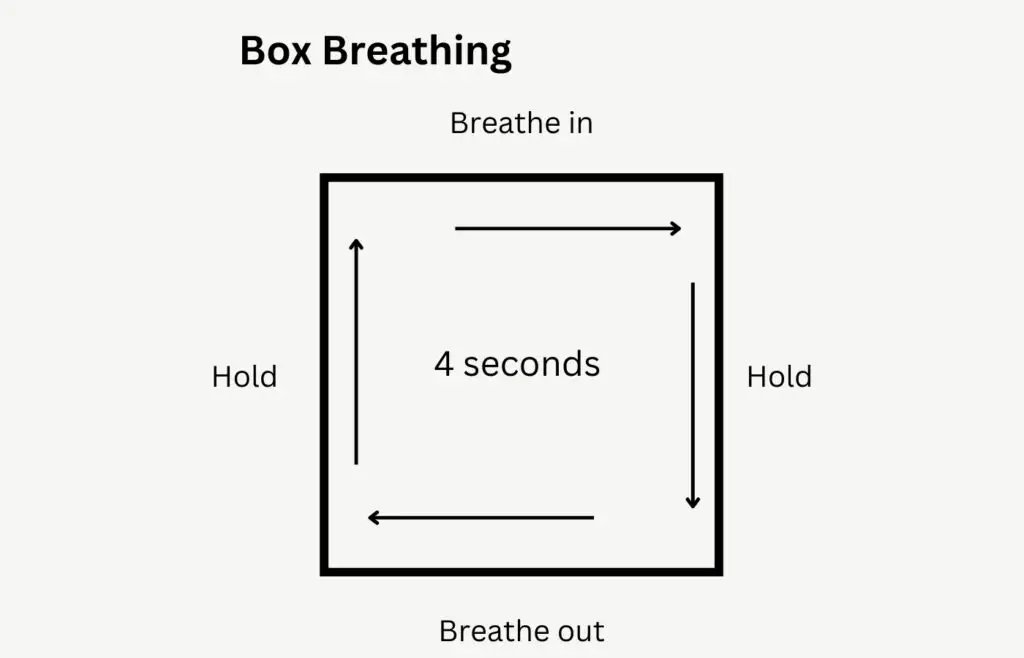
Self-Care 101: Why Is Conscious Breathing Important?
Breathing is something we do without even thinking about it, but did you know that it plays a crucial role in our overall health and well-being? It’s a simple yet profound practice that involves becoming aware of and controlling our breath patterns.
This intentional, focused breathing can transform our health in more ways than we realize. Building awareness around how we breathe in our daily lives and taking the time to breathe consciously can have a profound impact on our physical, mental, and even emotional health.
Our breath, often considered automatic and unimportant, is the lifeline that connects us to our inner selves and to the world around us. By harnessing the power of conscious breathing, we can tap into a treasure trove of benefits – from reducing anxiety to enhancing concentration, improving mood, and even improving our outlook on life.
But why is conscious breathing important? The answer lies in its ability to regulate our body’s systems, calm our minds, and enhance our emotional well-being. It’s a tool readily available to us at any moment and it’s time we learned how to wield it effectively.
Let’s dive into its surprising benefits and explore why conscious breathing is so important.
The Importance of Conscious Breathing for Health and Wellbeing

1. Reducing Anxiety and Stress
When life’s pace quickens and stress mounts, the breath often becomes shallow, rapid, and erratic. This physical response to stress can amplify feelings of anxiety, creating a cycle that’s hard to break free from. However, conscious breathing emerges as a beacon of relief in these stormy mental seas. Here’s why it’s so potent:
Activates the Relaxation Response
Unlike the stress response that accelerates your heart rate and raises blood pressure, conscious breathing activates the body’s relaxation response. By slowing down the breath, particularly the exhalation, it signals the brain to calm down and relax. This physiological change is like hitting the brakes when driving too fast—suddenly you have control again.
Shifts Autonomic Nervous System Balance
Our autonomic nervous system has two main divisions: sympathetic (fight or flight) and parasympathetic (rest and digest). Conscious breathing provides a mental shift away from the fight-or-flight response and towards parasympathetic dominance, which means more rest for your body and mind.
Reduces Cortisol Levels
Cortisol is known as the stress hormone. Breath practices have been shown to reduce cortisol levels, which not only helps alleviate anxiety but also improves immune function.
Creates Mindfulness
By focusing on the breath, you anchor yourself in the present moment. This mindfulness can cut through anxiety-producing thoughts about past regrets or future worries.
Empowers Self-Regulation
Learning to control your breath equips you with a personal tool to manage your stress responses. It’s empowering to know you have this built-in mechanism to counteract anxiety and stress anytime it arises.
The beauty of conscious breathing lies in its simplicity and accessibility. Whether you’re sitting in traffic, preparing for a meeting, or lying awake at night, turning your attention to your breath provides an immediate outlet for reducing tension.
Consider these benefits of conscious breathing:
A sense of inner peace even amidst external chaos
A drop in heart rate coupled with smoother blood flow
A quieter mind that eventually becomes a canvas for clarity and creativity
This ancient practice holds modern-day relevance because it addresses a fundamental need—balancing our nervous system’s reaction to life’s inevitable challenges. In essence, conscious breathing is not just about taking in air; it’s about transforming our entire being from the inside out.
Conscious breathing is not just about taking in air; it's about transforming our entire being from the inside out.
2. Improving Mood and Sleep Quality

Enhanced Mood States Through Breath
The way we breathe is closely linked to how we feel. It’s fascinating to see how our emotions and physical responses are connected. By practicing intentional breathing techniques, we can return to a sense of calmness that has the power to improve our mood.
Emotional Regulation: Taking slow, deep breaths can help us manage our emotions better. It’s like gentle waves smoothing out the rough sand of our feelings. This ability to regulate our emotions is essential for developing a more positive outlook on life.
Quality Rest and Sleep Hygiene
In today’s fast-paced world, getting good sleep can be challenging. However, incorporating conscious breathing into our bedtime routine can be a game-changer when it comes to achieving quality rest.
Sleep Hygiene: Establishing a wind-down ritual that includes conscious breathing signals to our body that it’s time to relax and prepare for sleep. This can help us synchronize with our natural sleep-wake cycle.
Restorative Rest: Practices such as diaphragmatic breathing have a calming effect on our nervous system, reducing nighttime anxiety and creating an environment conducive to deep sleep.
Boosting Self-Awareness
Our breath serves as an anchor for mindfulness, allowing us to tune in to our inner world. This self-awareness is crucial for understanding and managing our emotions effectively.
Improved Self-Awareness: Paying attention to the subtle sensations of each breath gives us valuable insights into our mental state. This heightened self-awareness sets the stage for improved mood and better sleep.
By making these simple yet powerful changes in how we approach our breath, we realize that the key to a happier mood and a more restful night’s sleep might be right within us.
3. Enhancing Focus and Concentration
When life gets too noisy and starts to distract you, conscious breathing can be a surprisingly effective solution. By paying attention to the rhythm of our breath, we engage in a practice that has the power to clear our thoughts and enhance our concentration. It’s not merely about taking a pause; it’s about rewiring our brains to enhance our cognitive abilities.
How does conscious breathing help with focus and concentration?
Cognitive Clarity: When we concentrate on breathing in and out, the many thoughts that usually scatter our attention start to fade away. This intense focus brings about a state of mental clarity that is perfect for handling complex tasks.
Productivity Boost: Better concentration naturally leads to increased productivity. A calm mind is more effective, able to quickly process information and make fewer mistakes.
Self-Awareness Surge: Purposeful breathing directs our thoughts inward, strengthening self-awareness. This heightened internal connection allows us to identify and deal with distractions effortlessly.
Stress & Anxiety Buffer: Deep, conscious breathing activates the parasympathetic nervous system—the calm counterpart to our fight-or-flight response—providing protection against stress and anxiety.
By making conscious breathing a part of your daily routine, you will not only experience immediate benefits like reduced anxiety and relief from stress but also long-term enhancements in focus and attention span. This simple yet powerful technique is always available —no matter where or when you need it—making it clear why conscious breathing is crucial for maintaining a healthy body and mind.
The Science Behind Conscious Breathing: Exploring the Research

Conscious breathing isn’t just something people talk about – there’s solid scientific evidence to back it up. Research has shown that it can have a real impact on our health and well-being. From ancient wisdom to modern science, studies from all over have confirmed the benefits of this practice.
1. Impact on Anxiety and Depression
A study published in the Journal of Clinical Psychiatry found that a breathing-based meditation known as Sudarshan Kriya Yoga can significantly reduce levels of anxiety and depression.
2. Cardiovascular Health
Research in the American Journal of Cardiology demonstrated that slow breathing exercises could lower blood pressure effectively, suggesting an accessible way to manage hypertension.
3. Respiratory Illnesses
A systematic review in 2020 highlighted improved respiratory function and quality of life in patients with conditions like asthma and COPD who engaged in regular breath work practices.
4. Neurological Benefits
The effects on cognitive function are also documented. For instance, a study from Frontiers in Psychology showed how yogic breathing enhances attention and motor accuracy, which suggests a direct link between breath control and mental performance.
Discovering these insights encourages a deeper dive into the practice, revealing how each breath we take can be optimized for our well-being. The layers of scientific validation peel back to show us not just how to live but to live with vitality.
As we continue to explore, let’s remember that each inhalation carries more than oxygen—it brings potential, and each exhalation does more than release carbon dioxide—it can let go of what no longer serves us.
Conscious Breathing Techniques to Try
Breathing is something we all do naturally, but did you know that you can use your breath to improve your well-being? Conscious breathing techniques are specific ways of breathing that have different benefits for your body and mind. One popular technique is called box breathing, which is known for its ability to promote relaxation and mental clarity.
1. Box Breathing: A Simple Practice for Relaxation

Box breathing, also known as square breathing, is a straightforward yet powerful technique that you can do anytime, anywhere. It’s especially helpful in stressful situations or when you need a quick way to calm down.
How to do Box Breathing:
Find a Comfortable Seat: Start by sitting in a quiet place where you won’t be disturbed, with your back straight and relaxed.
Close Your Eyes: Gently close your eyes to reduce distractions and bring your focus inward.
Inhale Slowly: Take a slow breath in through your nose, counting to four as you fill your lungs with air.
Hold the Breath: Pause for another count of four at the top of your inhalation, holding the breath gently.
Exhale Completely: Slowly release the breath through your mouth, again counting to four as you empty your lungs.
Pause Again: After exhaling completely, wait for four seconds before starting the next round of breathing.
Repeat this cycle for several minutes, aiming to do it at least four times in a row. You can also adjust the count to make it more comfortable for yourself, as long as you keep the same length for each step.
Note: If you prefer visual instructions, check out this video tutorial on box breathing from our friends at Take A Deep Breath.
As you practice box breathing regularly, you may notice that it becomes a familiar rhythm that you can rely on during stressful or busy moments. The balanced counts ensure that you pay equal attention to each part of the breathing process, promoting a sense of harmony and calmness.
Box breathing is not just a technique for emergencies; it’s also a valuable tool for improving your everyday life. By making this practice a habit, you might discover a peaceful refuge in the midst of chaos or a clear mindset when facing decisions.
Dive deeper into Box Breathing, how it should be done, and helpful variations and visualizations in our blog post “What Is Box Breathing And How Should It Be Performed?“.
2. Ujjayi Pranayama

In the world of yoga, conscious breathing takes on a different form called Ujjayi Pranayama. This powerful technique, also known as “victorious breath”, is an essential part of many yoga practices.
What is Ujjayi Pranayama?
Ujjayi Pranayama is a breathing technique used in yoga. It involves slightly constricting the back of your throat while breathing in and out. This creates a gentle sound similar to ocean waves, or light snoring, bringing a feeling of calmness to your mind and body.
Why is Ujjayi Pranayama beneficial?
The beauty of Ujjayi Pranayama lies in its ability to generate inner heat, making it an ideal practice for those seeking both physical and mental wellness. The warmth created through this regulated breath control aids in releasing tension and tightness throughout the body, promoting relaxation and a deeper connection to one’s inner self.
How to do Ujjayi Pranayama:
Find a Comfortable Position: Begin by finding a comfortable seated position where your spine is straight and aligned.
Keep your mouth closed.
Constrict your throat to the point that your breathing makes a rushing noise, almost like snoring.
Control your breath with your diaphragm.
Keep your inhalations and exhalations equal in duration.
Ujjayi Pranayama is more than just a form of conscious breathing; it’s a journey into self-awareness and inner harmony. As you explore this practice, remember that patience is key — at first, it may feel like you’re not getting enough air, but the technique should become easier with practice.
So why not give Ujjayi Pranayama a try? It could be your next step towards a more balanced and harmonious life. After all, the journey to wellness starts with a single breath.
Looking for the right breathing technique is a personal journey. If you’re interested in discovering more techniques and gaining a deeper understanding of mindful breathing, be sure to visit our blog post titled “How To Harness The Power Of Breathing: The Beginner’s Guide“.
Conscious Breathing for All Ages: From Kids to Adults
Breathing intentionally isn’t just a tool for adults navigating the complexities of life; it’s a skill that benefits individuals at every stage of development, especially young ones. Introducing conscious breathing for children and teenagers can be transformative, effectively sowing the seeds of emotional balance, awareness, and resilience from an early age. Simple breathing exercises empower them to navigate their emotions and stressful situations with grace.
For example, when exams loom on the horizon, anxiety can escalate rapidly. Our article “From Panic To Performance: Breathe Away Your Exam Stress“ details how breathing exercises can be a lifeline during such times, offering students a sense of control and calm amidst the storm of test preparation.
For the younger generation, here are some practical and fun ways to integrate conscious breathing into everyday life:
STAR Breathing: A fun visualization technique where they Stop, Take a deep breath, And Relax.
Balloon Breathing: Encourages kids to imagine inflating a balloon with their breath, which helps deepen and slow down their breathing.

Incorporating Conscious Breathing into Your Daily Routine
Transforming conscious breathing from an occasional exercise to a daily routine can seem daunting. Yet, integrating mindfulness into everyday life is more accessible than you might think. Here’s how to take the leap:
Start Small: Begin with a one-minute practice, and gradually build up to five minutes or longer. Even short periods of conscious breathing can have profound effects on your well-being.
Create Space: Dedicate a quiet and comfortable space in your home for breathing exercises. This physical location will serve as a reminder of your commitment to conscious breathing.
Set A Schedule: Consistency is key in practicing conscious breathing. Try to set aside dedicated time each day, such as first thing in the morning or before bedtime.
Use Technology: Leverage the power of technology by using apps or online platforms that guide you through different breathing techniques.
Stay Patient: Remember, it’s not about perfecting the technique; it’s about the journey. Allow yourself grace if you miss a day or struggle with maintaining focus.
In essence, cultivating a consistent breathing practice is akin to nurturing a plant; it requires dedication, patience, and care. As you begin to reap the benefits – from reduced stress to improved concentration – the effort will undoubtedly feel worthwhile.
The Transformative Power of Breath: A Lifelong Journey to Health and Inner Harmony

Your Breath: A Sanctuary in the Chaos
Picture your breath as a personal sanctuary, a safe place where you can find relief from stress, anxiety, or tiredness. Think back to those times when you felt completely overwhelmed. Your breath was there for you, steady and constant. It’s not just about getting by; it’s about embracing life with more energy and vitality.
The Lifelong Journey Towards Health and Inner Harmony
The path to being healthy and finding inner peace is not a competition. It’s not about who gets there first or who takes the most steps. Instead, it’s a journey that lasts our whole lives, where every breath we take is a step forward. So let’s slow down. Listen to your breath. Savor its rhythm. And let it lead you to calmness even when everything around you feels chaotic.
Embracing Technology on Your Journey
For those who want some guidance along the way, technology can be a useful tool. There are apps like Breethe, Calm, and Headspace that offer guided breathing exercises, making it easier and more enjoyable to practice every day.
Conscious Breathing: More Than Just a Technique
It’s important to remember that conscious breathing is not just another technique we try once in a while. It’s a choice we make every day, a way of living that shows we value ourselves and our well-being. So let’s breathe consciously, live consciously, and discover the harmony that lies within our own breath.
“The breath is the bridge which connects life to consciousness.” —Thich Nhat Hanh
Leave a reply
Got any questions or want to share your favorite breathing exercises? Let me know in the comments below!






3 Comments
Deanna
06/04/2024 at 9:33 PM
I love this! I was just doing some deep breathing exercises today at work to help keep me in the moment and slow down the busy and chaotic day. <3 It truly helps to remember to stop and breath every once in a while.
Michele
09/04/2024 at 2:16 AM
Yes, Deanna! It should be so simple, but so many of us just forget to breathe when life gets in the way. So glad you took the time to pay attention to your breath and consciously adjust it!
Hari
23/04/2024 at 9:24 AM
Deep breathing definitely helps to calm ourselves from the chaos of everyday. Such a wonderful read indeed!